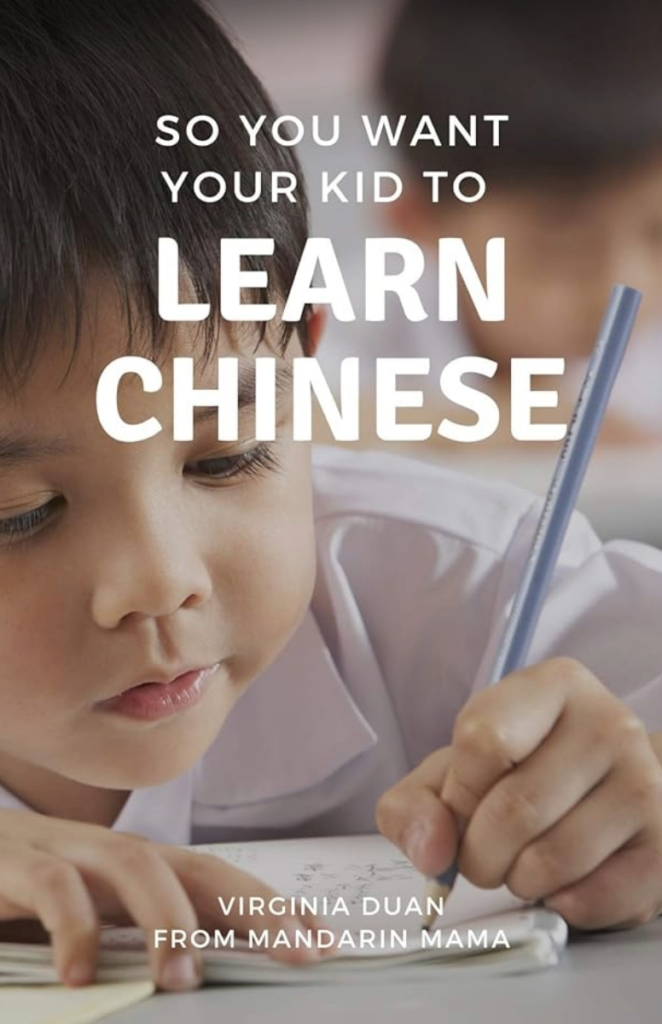 Nowadays, it seems everyone wants their kids to learn Chinese. There are immersion schools, after school programs, apps, books, and educational toys galore.
Nowadays, it seems everyone wants their kids to learn Chinese. There are immersion schools, after school programs, apps, books, and educational toys galore.
It’s overwhelming.
As a second generation Taiwanese American, I know all about the struggle to learn and retain Chinese in America – both as a child and now as a parent.
While the environment now is much more supportive of learning Chinese, it is still a feat of gargantuan proportions – especially for families of Chinese descent. So much of the culture at large makes Chinese out to be non-essential, foreign, and an object of ridicule that though many children of Chinese heritage start out fluent, they are quick to be rid of it once they start school.
Though I do not have fancy linguistic degrees, nor am I functionally literate in Chinese, I am a firm believer in practical advice and detailed applications. I have made my children’s bilingual and biliteracy in Chinese and English one of my primary goals in their education.
So, if you’re sick of generic articles that tell you things you already know and long for someone to just tell you what to do already to get your kid fluent in Chinese, below are some of my most popular posts on the subject.
If you would prefer ALL my posts collected in one convenient spot along with a comprehensive action plan, I updated many of them as well as added 4-5 exclusive chapters in my book, (affiliate link) So You Want Your Kid to Learn Chinese.
Be forewarned, the following posts often have creative use of the swears (the book does not) and if that and an ample dose of snark are problems for you, these are likely not the articles you are looking for.
1) Realistic Expectations for Learning Chinese – Chinese fluency requires intention. I give some straight talk on what it actually takes for our kids to become fluent and literate in Chinese.
2) Top 5 Myths about Mandarin Immersion Schools – Are you sending (or considering sending) your kids to Mandarin Immersion school? If so, here are my top 5 myths about Mandarin Immersion schools.
3) Should Your Child Learn Traditional or Simplified Characters? – Lots of people agonize over whether their kid should learn traditional or simplified characters. In this piece, I explain the pros and cons of each as well as the history behind the characters. It also contains the best flow chart I have ever created in my life.
4) The Case for Zhuyin – Zhuyin is the phonetic system Taiwan uses instead of pinyin to help their kids learn to read Chinese. Here, I explain why zhuyin makes it easier for your children to learn how to read Chinese.
5) How to Get Your Kid to Speak Chinese – Let’s face it: getting your kid to speak Chinese is often the biggest battle. Here are 11 tips on how to encourage your children to speak Chinese.
6) How to Gauge Chinese Fluency – How do you know your kid is as fluent as you think they are (or as someone is telling you)? Here are some points to consider.
7) The Costs of Learning Chinese – Here are 4 of the biggest costs that you can expect in your children’s bilingual journey.
8) Why I Sometimes Advise People to Give Up Chinese – Just like it’s good to know why you want your kids to learn Chinese, it’s even better to know your deal breakers.
9) Hiring an Au Pair for Chinese Fluency – Though this is a guest post by my friend, Hapalicious, it is a super useful and informative post on how to use an au pair to help with Chinese fluency.
10) Sagebooks – If you’re teaching your kid Chinese characters on your own, it’s hard to know where to start. This curriculum is my favorite for beginners and is one of my top posts.



